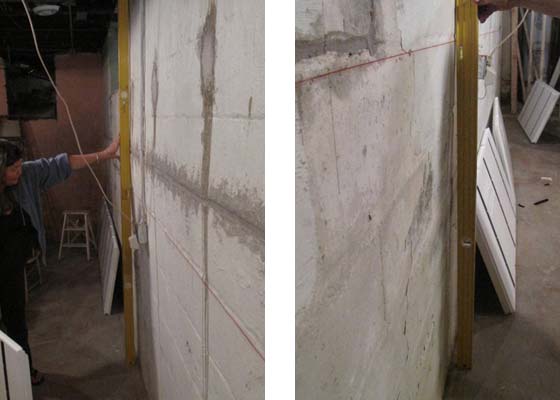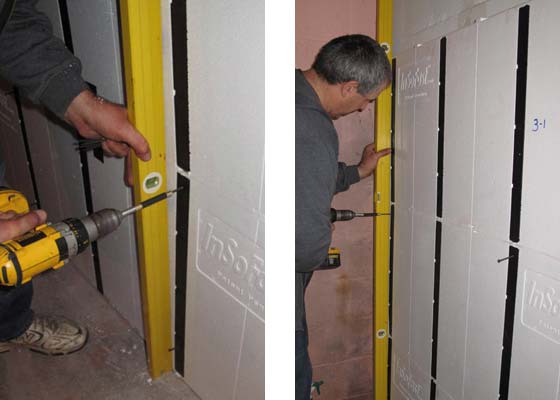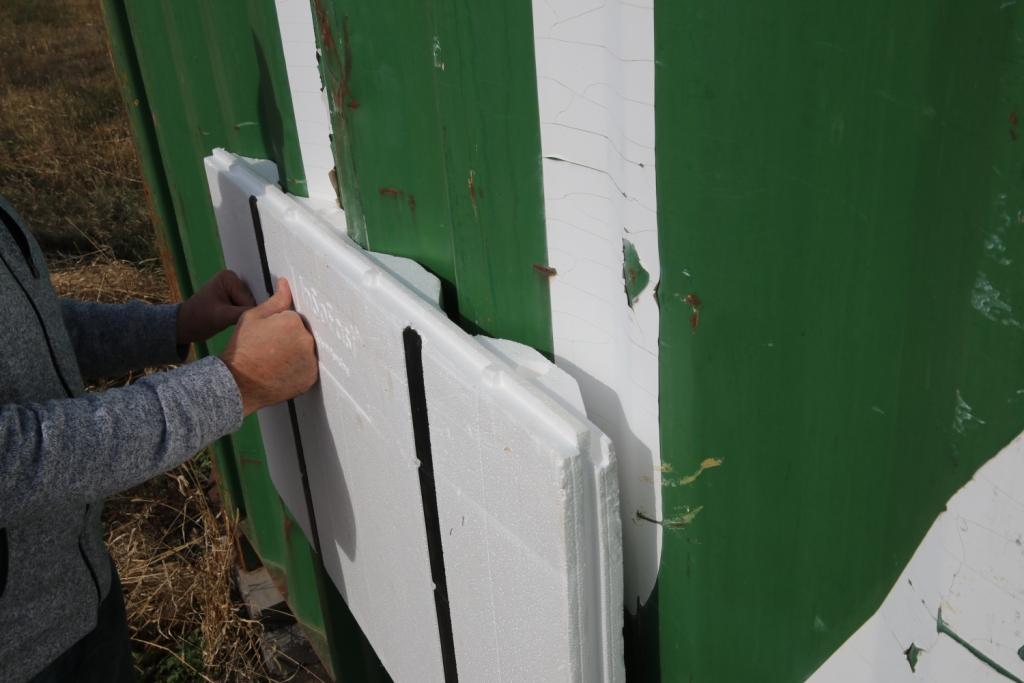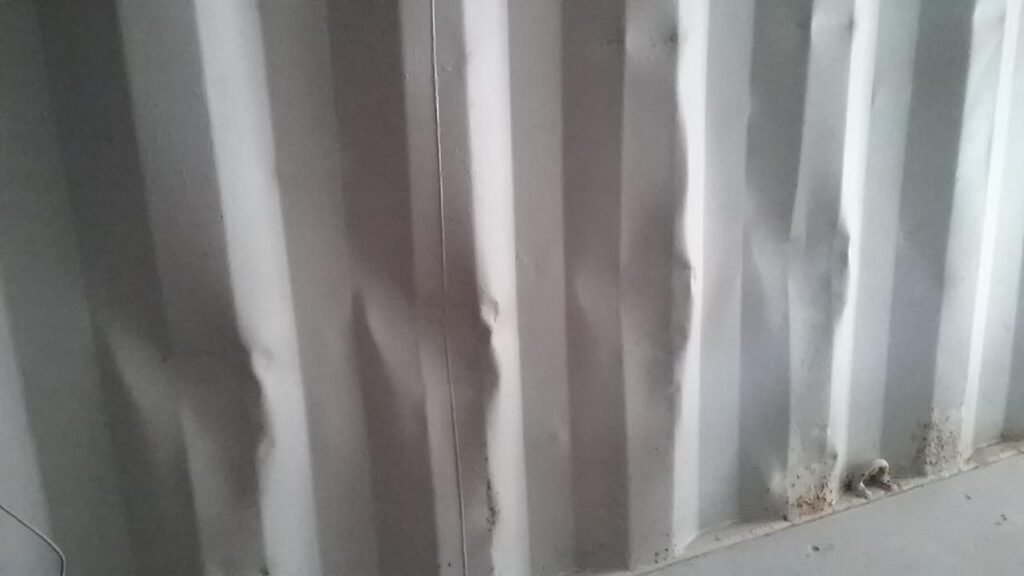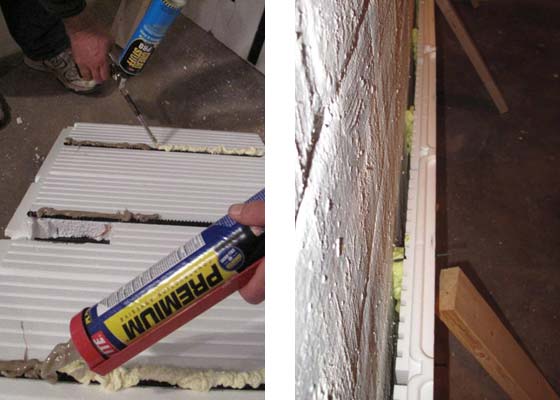
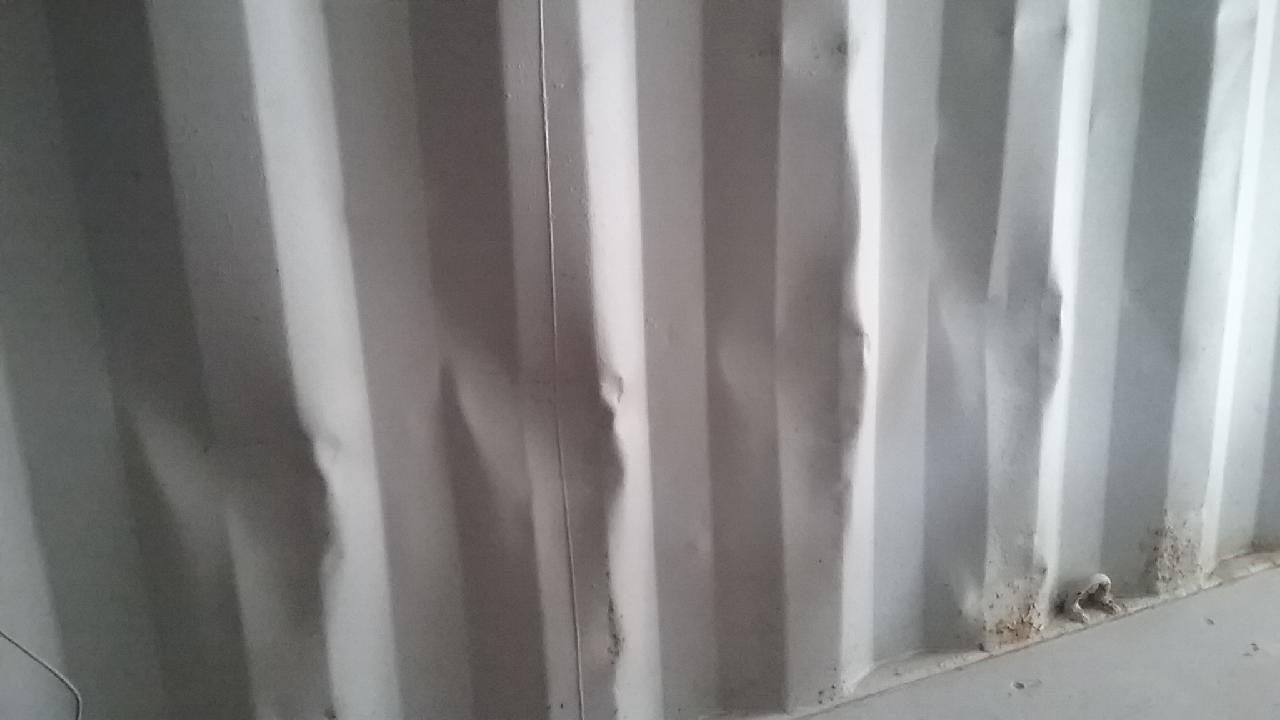
“Just because you can, doesn’t mean you should!”
| Install Guide | Ordering Guide | « Tech Sheet » | Contact/Quote |
It is important to inspect the walls you want to cover before you order InSoFast. InSoFast panels are not suitable for every project. If you have a question call or contact us. It is up to you to decide if you have the skills necessary to tackle leveling a wall using these advanced techniques. A wall must be repaired and stabilized structurally. Containers should be hammered flat and true and all rust spots and hole fixed. InSoFast panels are designed to be applied to structurally sound walls.
1. Begin with a Dry Stack
Dry stack your wall with InSoFast panels. Whether you are working in a basement or a shipping container projects the goal and methods are similar. The goal is to mimic the intended final installation but without physically attaching the panels. Once the walls are set up, one option is to shim the panels using 4″ deck or drywall screws and a straight edge. Screw through the panel’s stud until the screw comes in contact with solid wall. Then, slowly continue screwing so that the panels are ratcheted outward and become plumb or vertically even with your straight edge.
At this point, the unique position of each panel and its screw shims is critical. They need to be placed in these exact positions again during the final installation. So mark number or label your panels this will aid you in reconstructing your wall later.
2. End with a Liquid Shim
The set screws serve as a guide for the amount and type of adhesive you will apply during the actual installation. Determine a method for deconstructing the walls. We find that simply removing the panels in reverse order is most beneficial to the workflow.
Where the set screw protrudes less than ⅜” from the back of the panel, apply PL Premium 3X Stronger adhesive to the dovetailed stud. PL Premium adhesive is designed to be able to span gaps this size and smaller.
Where the set screw protrudes more than ⅜” from the back of the panel, apply a generous bead of spray foam adhesive. The spray foam adhesive is only used in areas that have a gap of ⅜” up to a maximum of 1″. Beyond that, the volume of spray foam needed may be cost-prohibitive.
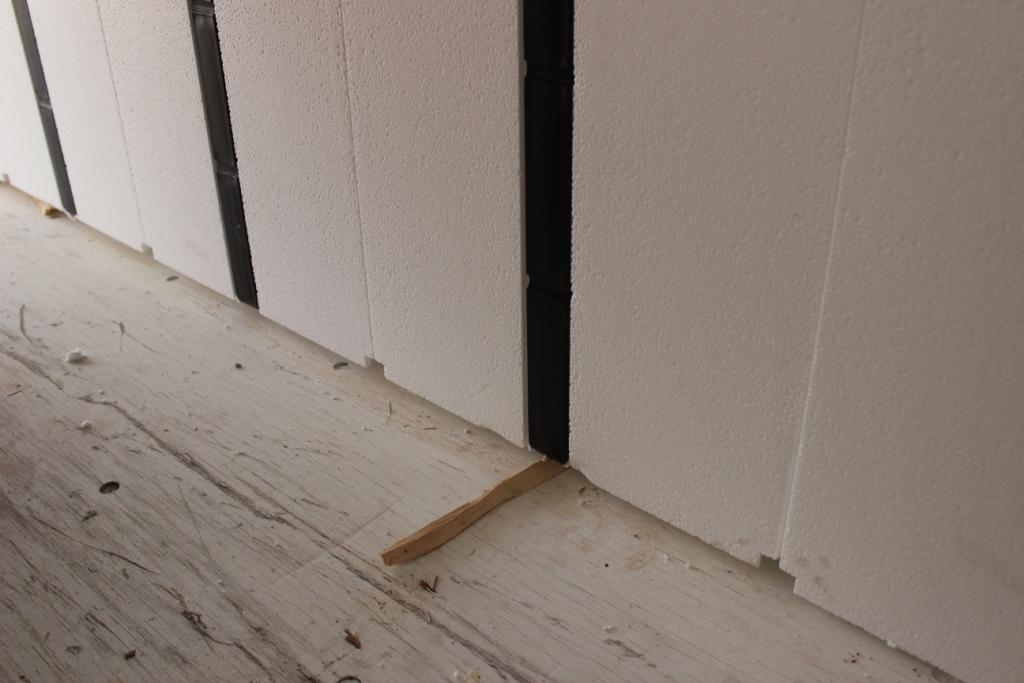
Shimming Container Panels
3. Straight Walls
Allow at least 24 hours for the adhesives to cure before finishing with drywall. The design of the InSoFast UX’s tightly interlocking edges helps maintain a plumb finish.
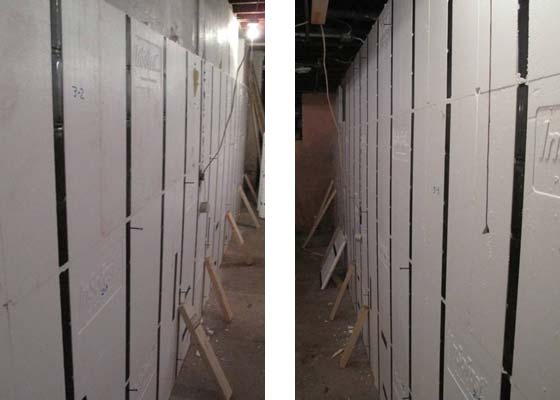
Walls are rarely as level as you’d hope they are. Contractors installing InSoFast against the extremely uneven stone wall pictured below used spray foam to attach the panels. While the spray foam cured, they held the panels in place with temporary 2x4s. The interlocks that connect each panel create a self-leveling structure in the finished walls.
Note: EX 2.5 panels are designed with a tighter interlock than the UX 2.0 panels, which greatly aids the plumbness of a finished wall. For this reason, we recommend opting for EX panels when faced with highly uneven walls
